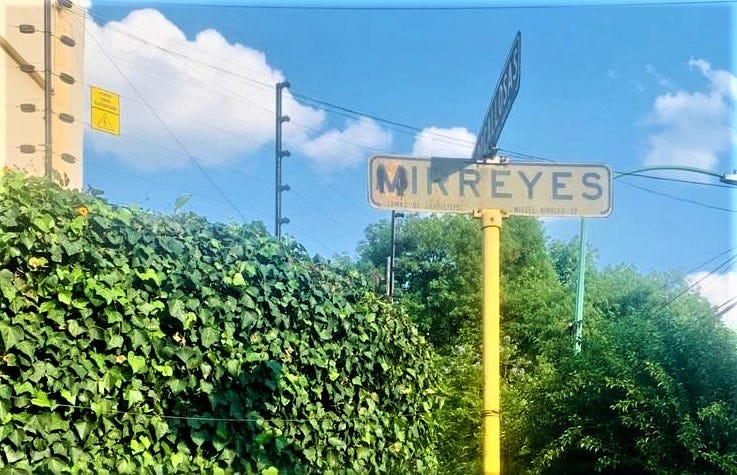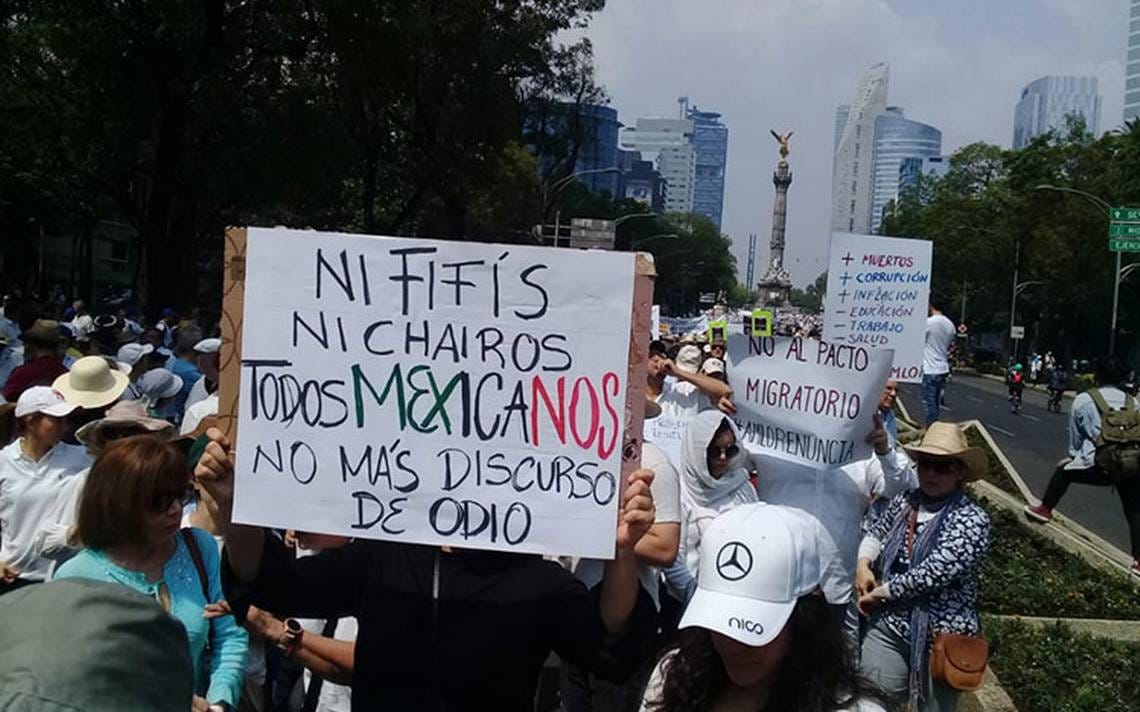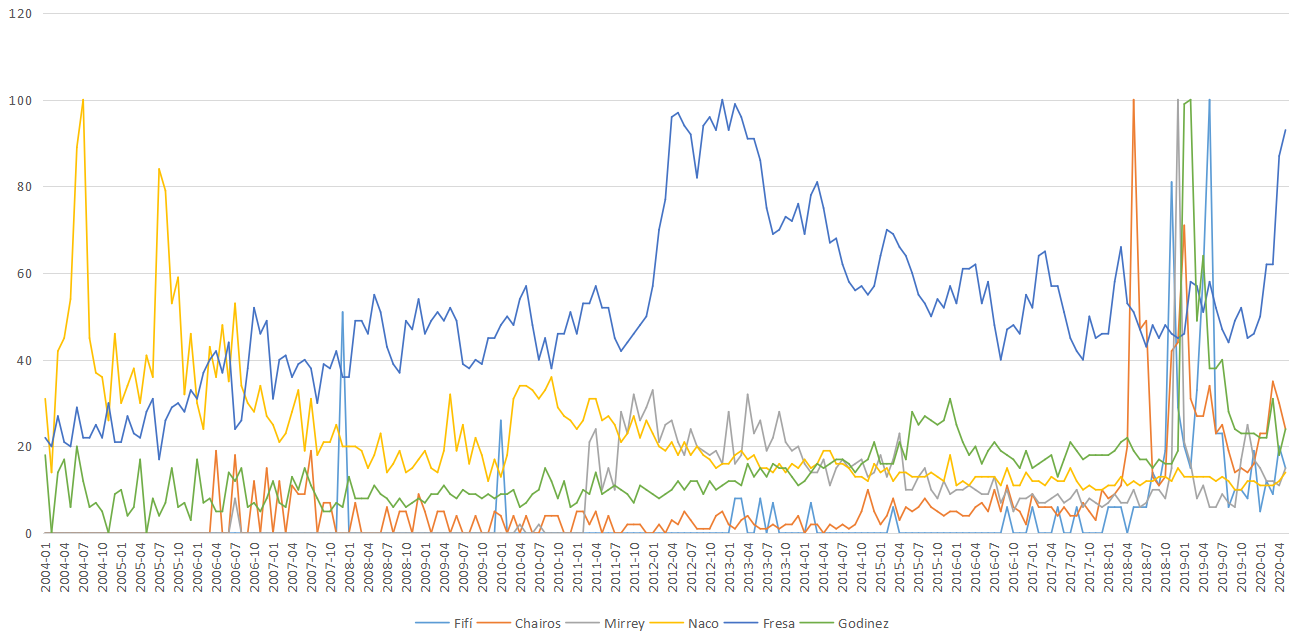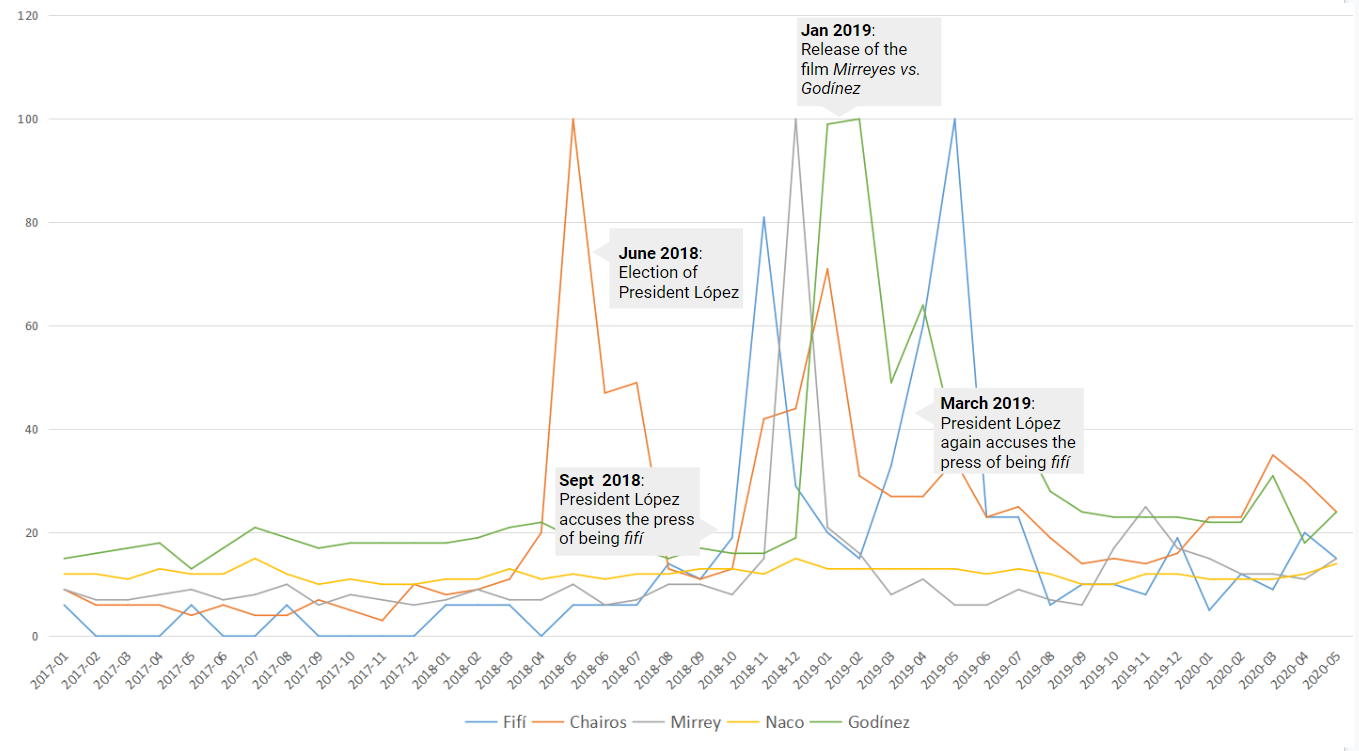By Jesse Libra
Scrolling through my husband’s Twitter the other day, I was lost. We’ve lived in Mexico City for three years now, and my Spanish is pretty good but I found myself staring at tweets as if they were in Cyrillic. What the hell is a chairo?
As much as we may dislike stereotypes, understanding them can tell us a lot about the society we live in. Mexico, in particular, has a rich bouquet of colorful, often derogatory terms that pigeonhole people based on their appearance, class, and political beliefs. Fifí, godínez, chairo, mirrey — these terms give us outsiders a valuable window into issues of race and inequality in Mexico and help us understand Mexican humor, which tends to satirize these stereotypes heavily.
This article overexplains six of the most common class stereotypes in Mexico to help you recognize them when you see them, understand where they come from, and learnthe vocabulary that goes along with each.
1. Fresa
Let’s get this one out of the way. Fresa, literally strawberry, is a term you are probably familiar with if you have spent any time learning about Mexican culture. There are many derivatives or subtypes within the fresa stereotype and in its most general sense it is used an umbrella term for anyone who is wealthy. Because of the strong correlation between wealth and race in Mexico, fresas are generally of European or middle-eastern descent.
As a stereotype, fresasare young and rich. They tend to pepper their speech with English words, signaling their metropolitanismo — a clear indication that they come from the upper class. Fresas listen to commercial, unoffensive music (think Luis Miguel or Shakira), they holiday in Vail, and use filler words like o sea. On the negative end of the stereotype, they are seen as being insular, self-involved, picky, mamones, and perhaps a bit prudish. In English, they might be called basic.
Fresas speak with a distinct accent which is commonly referred to as having la papa en la boca, or talking as if you have a potato in your mouth. An exaggerated example of this accent is Paulina de la Mora from Casa de las Flores, as portrayed by Cecilia Suárez. Slang created by adding the -i suffix is common — words like holi for hola, qué ondi for qué onda, and the horrific por fis for por favor.
Fresa can also be used as an adjective to describe anyone who is overly prudish, regardless of class. For example, if you say you don’t want to have sex before marriage, your friend may tease you by saying, “¡Qué fresa eres!”
2. Mirrey

The term mirrey — literally “my king” — originated as a common greeting in the wealthy Mexican Lebanese community, but emerged in the late 2000s as a distinct stereotype: rich boys, typified by conspicuous consumption, entitled attitudes, alcoholism, and an acute lack of awareness of their privilege relative to the rest of society. They dress similarly, in white shirts unbuttoned halfway down, expensive loafers, and pricy accessories like sunglasses and watches. They can be thought of as the extreme of the fresa world.
Again, mirreyes use a specific lexicon, with suffixes like –uki (peduki, lobuki), –irri (Acapulquirri) and words like paps, papá, lord, and the word mirrey itself. This speaking style is easily parodied in memes and on-screen personalities, making the mirrey a popular archetype of Mexican comedy writers.

Whether the term mirrey is offensive depends on whether or not you are a mirrey. Many nominal mirreyes take pride in the term. They are not, however, a well-loved archetype by the general population, and are commonly the butts of jokes in movies and pop-culture.
Common examples of mirreyes are:
- Javier Noble from Nosotros los Nobles
- Luis Miguel, singer
- Enrique Peña Nieto, former president of Mexico
- Fransico from Amar Te Duele
- Chava Iglesias from Club de Cuervos
If you still don’t feel like you have a clear mental image or want to go deeper into the mirrey as a meme, I highly recommend Mirreybook on Tumblr.
3. Godínez
Godínez is a semi-pejorative term for an office worker. You know the type — they work 9 to 6, have a cubicle, bring a packed lunch, and have an office ID on one of those retractable clips (a yo-yo).
The origin of the term is not clear. One theory is that it sprung from a character from the television series “El Chavo del Ocho”, Godínez, whose comedic relief comes from avoiding work as much as possible. If you relate to the characters in “The Office”, you are likely a godínez.

There are a number of class indicators that are built into the godínez stereotype. According to this Excélsior broadcast, godínez often live in neighborhoods distinct from where they work and have Androids as opposed to iPhones. The term implies a distinct lack of agency — a godínez doesn’t manage their own time.
The stereotype is of an aspirational middle-class but term godínez can be applied to anyone who works a restrictive office job and understands the trials of shared refrigerators, open office layouts, and switching out the toner in the office printer. If you enjoy juebebes ( jueves + bebes) you might be a godínez.
Notable examples of godínez in pop culture are:
- Genaro from Mirreyes vs Godínez
- Betty Pinzón from Yo Soy Betty, la Fea
- Hugo Sánchez from Club de Cuervos
4. Naco
Naco is a complicated and controversial word that can be applied to a wide range of stereotypes, so it isn’t as clear-cut as many of the others on this list. At its most basic naco means trashy and at its worst it’s an ethnic slur. It is best avoided if you aren’t a native speaker, and probably even if you are.
Today, you will hear it in situations where someone is being rude; for example, if someone doesn’t pick up after their dog, you might hear a passerby tell them “no seas naco” — “don’t be trashy”. But you also might hear it in less benign contexts, so it is important to understand its origins and use.
naco(Posiblemente de totonaco.), naca. adj., y m. y f. 1. Indio, indígena. || 2. De bajo nivel cultural, ignorante.
The origins of the word naco are uncertain, but it is commonly thought to come from Totonac, the name of an indigenous group located in the states of Veracruz, Hidalgo, and Puebla. Up until the 1970s it was commonly used as a derogatory term for indigenous people in Mexico, after which it became more broadly applied — you can see why this is a word you might want to avoid.
There are three use-categories that naco can fall into:
- Casual use: In this context,it describes someone who is violating the social contract in some way. For example, you may be called naco for littering in a park or driving down the shoulder of the highway to get past traffic. It can also be used to call someone tacky, for example, a mirrey talking loudly about their Rolex. In this context, it refers to someone acting badly and is largely agnostic of class.
- Classist use: In this context, people use naco to describe behavior they view as bad-mannered, usually associated with a socioeconomic class below theirs. This usage is more mean-spirited than the use described above. For example, it might be used by upper-class Mexicans to condemn the nouveau riche for patterns of conspicuous consumption.
- Racist use: In this context, it is a racist slur for indigenous people. This might have been the original meaning of the word, which is why some find the word inherently offensive.
While naco is very commonly used by Mexicans from all backgrounds to describe behavior that they find in bad taste, it is easy to make the argument that even casual use is classist, in the same way that calling someone trashy could be considered classist in English. Even so, it is often used on television and other media in the casual sense and is not a curse word.
5. Chairo
Chairo is a pejorative term for someone who is outspokenly leftist, socialist, or communist. The word implies a blind adherence to ideology and often a lack of commitment to real action. There is no easy U.S. equivalent of this archetype; the closest might be a college student in a Che Guevara t-shirt who can’t be bothered to vote, but that doesn’t really get at it, so let’s try to go beyond simplistic U.S. analogs.
The term was first widely used in the 1960s when it was associated with adolescents who were distracted or self-absorbed (coming from chaqueta, Spanish for jacket and also slang for jacking-off — the implication being that the act of masturbating makes you self-absorbed and distracted). The term evolved ideological connotations with the phrase chaqueta mental, which can be translated as a self-delusion or believing something in spite of evidence to the contrary. Critics of chairos accuse them of doing maromas,flips, to arrive at their political conclusions — the conceptual equivalent of mental gymnastics.
Since the election of Mexico’s current left-wing President, Andres Manuel López Obrador, chairo as a term has vastly increased in popularity and has become ubiquitous on Twitter as a disparaging term for the president’s base, who largely tend to be less wealthy and darker-skinned. As a result, the word chairo can have racial and class connotations.
The recent rise in popularity of the word chairo has resulted in the coining of the term derechairo, a clever portmanteau of derecha and chairo, meaning a fanatical right-winger.
6. Fifí

Fifís are the opposite of chairos, at least in the political arena. To be fifí is to be pro-status quo, of the privileged class, the beneficiary of government corruption for the last 60 years, and, most importantly, in opposition to President López’s Morena party. There is a lot of overlap with fresa, although unlike fresa, no one self-identifies as fifí.
This term has been popularized recently by President López, who uses it regularly to describe his opposition and has accused the press itself of being fifí. Sound familiar?
Until recently, the term was considered antiquated — it’s first documented use being from the 1880s. While its origins aren’t certain, it has been suggested that it comes from the word fifiriche, which means someone concerned with their appearance. By 1911, the beginning of the liberal and very short-lived presidency of Francisco Madero, the term had evolved to mean rich conservatives who enjoyed — almost exclusively — the spoils of the prosperous Porfirio Díaz regime. These fifís, including Generals Victoriano Huerta and Félix Díaz, lead a coup against Madero killing him and his vice president. To many, the liberal President Madero is a symbol of what Mexico could have been, and by likening his detractors to the factions that murdered Madero, President López is able to draw parallels between Madero and his own administration.
Trends over time

The application of these stereotypes to a given individual won’t tell you much about that person — they are not mutually exclusive terms. For example, you can have fresa godínez, naco mirreyes, and chairo fifís. The prominence of these terms over time, however, is interesting to look at.
Looking at Google searches from 2004 to 2020, we can see a few broad trends related to these words. The prominence of the term naco in Google searches has decreased significantly over the last 20 years, possibly because some segments of society have become more sensitive to its racist connotations. On the other hand, terms relevant to the current political climate like chairo and fifí hit their peak in the months surrounding President López’s election and see renewed interest whenever a political controversy is stirred. Fresa has remained popular over the last 20 years, likely due to its primary meaning: strawberry.

Looking more closely at the timeline we can see a number of peaks related to specific events, especially for the political terms. In September 2018, for example, the president first called the press fifí over criticism of his decision to cancel the already-underway airport in Texcoco. Throughout November 2018 the word was in the news frequently due to protests over the president’s decision, which the president termed fifí protests. Spikes can also be explained by pop culture, like the spikes for mirrey and godínez associated with the marketing and release of the film Mirreyes vs. Godínez in late January 2019.
Understanding these stereotypes and their origins gives you the gift of context, a precious commodity when trying to understand a foreign culture. I’ve lived in Mexico for almost 3 years, and I still miss a lot of what goes on around me because of a lack of cultural context (ex: why does everyone at this New Year’s party keep talking about grapes?). The worst thing about missing cultural context is that you often don’t realize you are missing anything.
So now that you have a little more of that valuable commodity, go use it! Follow some Mexican Twitter accounts or watch a Mexican Netflix series. You’ll be surprised by how often these words come up and how much richer your understanding is now that you have some context.
Vocabulary from this article:
- Acapulquirri : Acapulco, a favorite vacation spot among mirreyes.
- chairo : individual on the far left (politically)
- derecha : right, in the directional sense
- derechairo : individual on the far right (politically)
- fifí : rich, privileged, conservative person, status quo
- fresa : rich, privileged, young, prudish person
- godínez : an office worker
- hacerse/echarse una chaqueta : to masturbate
- holi:hello, fresa shortening of hola
- juebebes : thirsty Thursday
- lobuki : a term for women analogous to “chick” in English.
- mamón, mamones (pl.): stuck up
- maromas : flips, as in acrobatics
- mirrey : rich, privileged, spoiled, male
- naco : trashy
- o sea : that is, as a filler word
- paps / papá / lord : similar to “bro”, words mirreyes use to refer to each other.
- peduki : short for peda,a term for get-together or party. The term pedo/a can mean many things and deserves an article of its own.
- por fis : please, fresa shortening of por favor
- qué ondi : what’s up, fresa shortening of qué onda
- un yoyo : a work id, specifically one on a clip with a retractable string
- la papa en la boca : literally, a potato in the mouth, it is a term describing the fresa accent.

Jesse Libra
Follow Jesse Libra is a writer and data analyst living in Mexico City.
Source: medium.com
The Mazatlan Post



